Hashtags are everywhere these days – on Twitter accounts and news feeds, advertisements, weddings, and car commercials. When designed well, Hashtags can increase your online following, drive customer engagement, and help pin down what makes your company unique. If not designed well, hashtags don’t do much at all. So what makes a good hashtag? And how can businesses design hashtags that work for them?
First, let’s understand the different types of hashtags that exist and how to design for each type:
Community Hashtags
Community Hashtags are hashtags that are used to bring a group of people together around a larger interest or cause. Because these communities go beyond a single business or brand, they are generally broader.
Tips for Creating a Compelling Community Hashtag
- Make it Memorable – The easier it is to remember your hashtag, the more it will be used. Brief and simple is better than overly witty or complex.
- Make it Easy to Use – Focus on making it easy to use organically. Will it flow if used in a sentence?
- Tie it to an Emotion – The best hashtags focus on the emotion that brings your audience together. What emotions do you want your hashtag to signify?
A good example of a popular community hashtag is #wanderlust, which allows travel fans to share their latest photo of a beautiful destination or lust-worthy adventure:
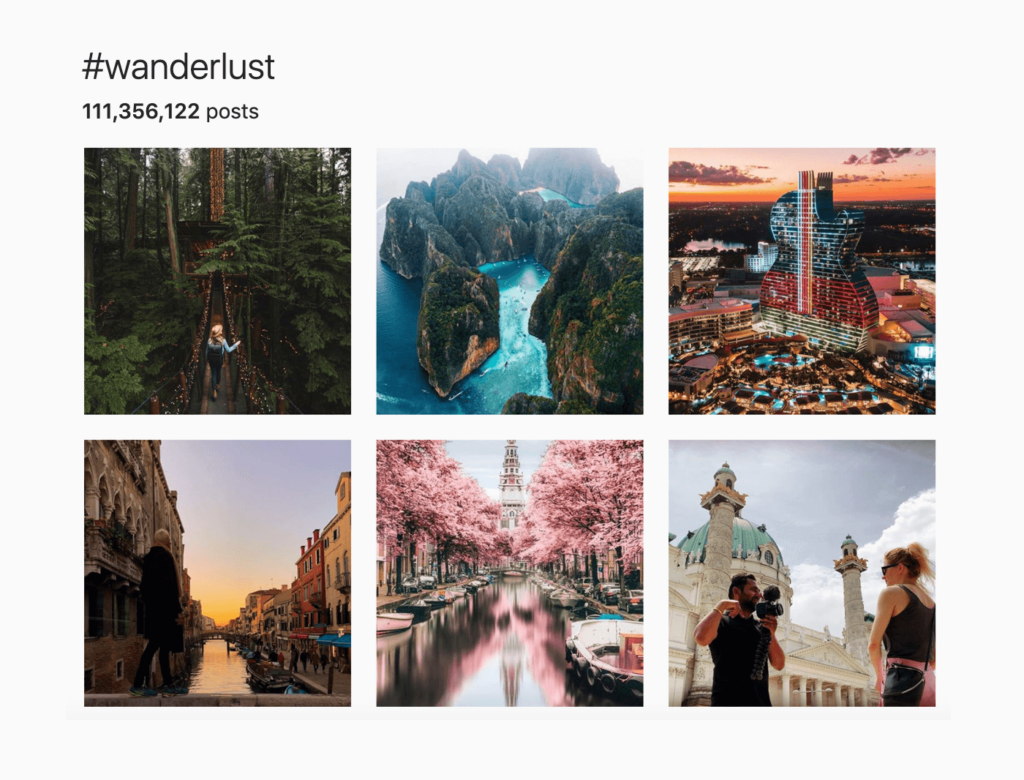
As a marketer, it’s essential for you to understand the kinds of popular hashtags your audience is already using so that you can participate in the conversation. Use Instagram’s Explore feature to find influencers in your niche or look at existing followers to see what hashtags they are using. Other social media platforms also provide an easy way to search through hashtags and browse popular content.
Branded Hashtags
Branded hashtags are simply unique hashtags that a business uses to promote its product or services. One key detail about branded hashtags is that they are not meant to expire after a certain time. They are all about building the brand’s identity among an audience. Much like a Community hashtag, these hashtags connect fans of a brand together and enable them to participate in the conversation.
Tips for Creating a Compelling Branded Hashtag
- Invest in Promotion – Create a comprehensive marketing strategy and social media plan to promote your hashtag over a sustained period. You will be driving the initial hashtag use. It’s not enough to just come up with something catchy and hope it sticks.
- Target your Audience – The better you know your target audience, the better your branded hashtag will fare. Speak how they speak and you will reach the right people.
- Showcase hashtagged content – Create a hashtag page where users can submit and view hashtagged content. Re-post content on your brand’s official account. Integrate the content within your product’s marketing. The key is to allow your audience to go beyond their individual social media posts. Tools like TINT make this a seamless part of your hashtag strategy.
A great example is #HMxME, which is a tag created by clothing retailer H&M (@HM) to enable fashionistas to share real photos of outfits that they’ve put together using H&M’s styles:
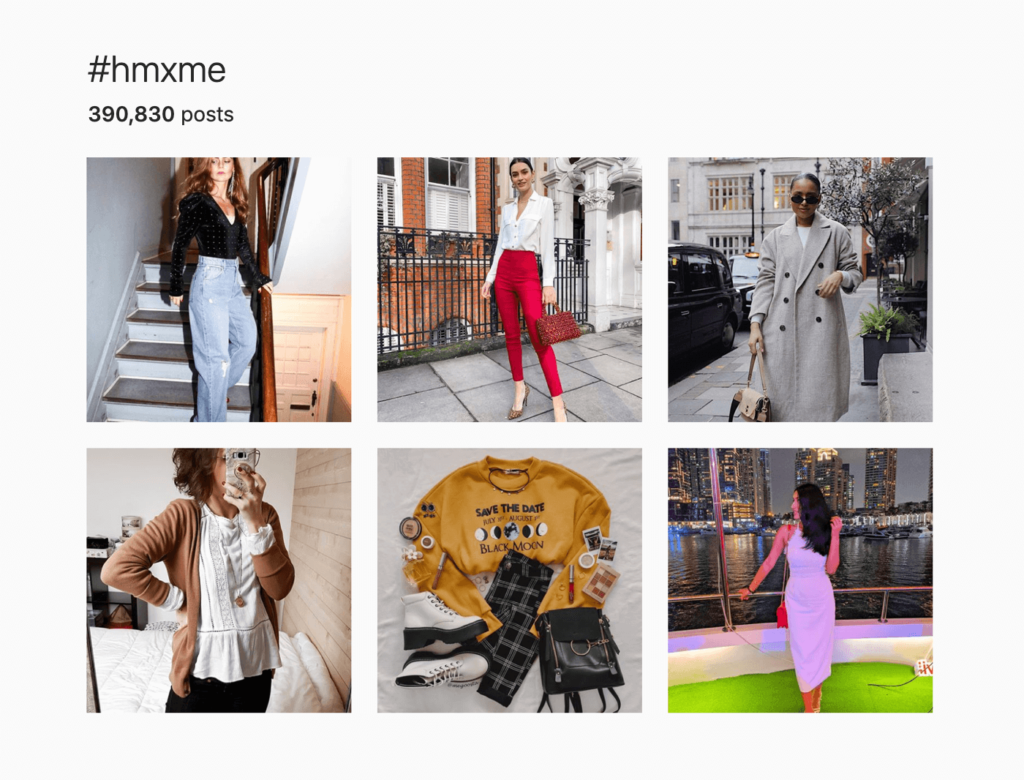
Campaign Hashtags
Unlike Branded hashtags, these hashtags revolve around a shorter-term campaign that may last a few days or a single season. The goal for campaign hashtags is to maximize exposure and engagement, usually to a wider audience.
For example, Coca-Cola’s #ShareACoke campaign:
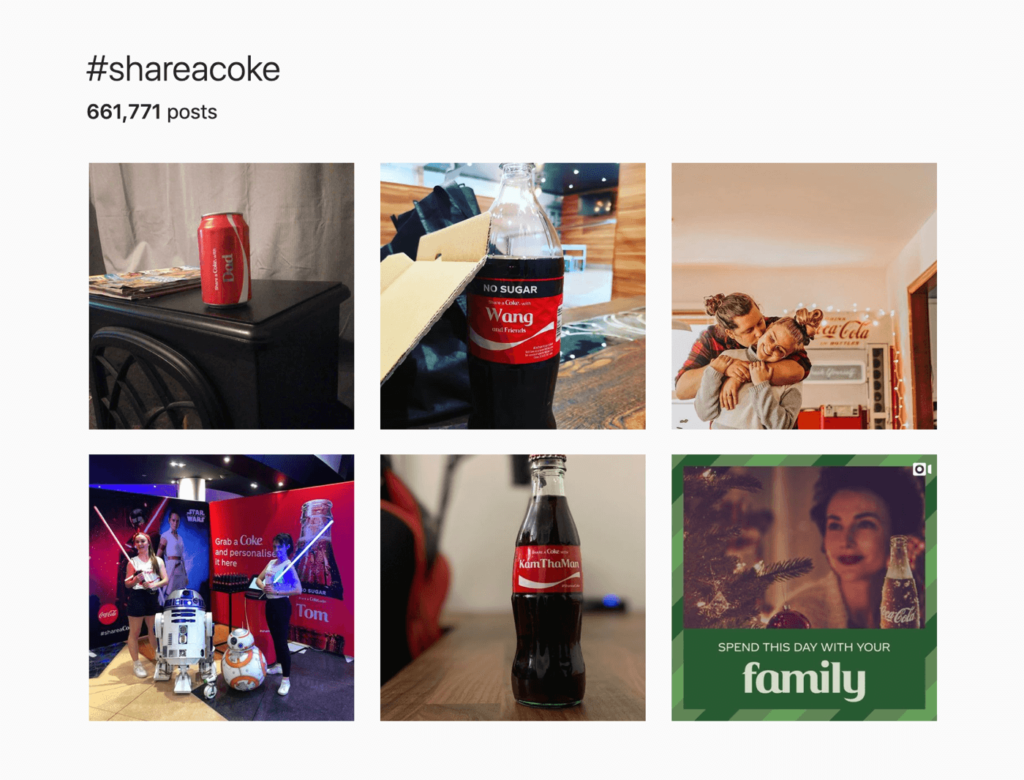
Tips for Creating a Compelling Campaign Hashtag
- Exercise your Creative Freedom – Because of the temporary nature of campaign hashtags, you have more expressive leeway. This is your opportunity to use wit or humor in a way that would be too difficult to do in a hashtag meant to last a long time.
- Spark Curiosity – Campaigns are all about creating awareness among new audiences. Your hashtag should make potential customers curious about learning more.
- Include a Call-to-Action – How do you want your audience to participate in the campaign? Your hashtag should help answer the question. (ex: #ShareACoke)
Now that you know what kind of hashtag you are creating, let’s start brainstorming.
Brainstorming Hashtag Ideas
Find a big whiteboard and get creative. To seed your brainstorming session with new hashtag ideas, start by creating lists for each of the bullet points below:
- Brand Identity and Language – This includes names, taglines, products, and any words associated with your brand. Make sure to consider colloquial names as well.
- Emotions – List the emotions you want to be associated with your hashtag. Includes synonyms for this emotion.
- Calls to Action – Find verbs that describe what you want your audience to do.
- Hashtag Inspiration – These are hashtags that you feel are great examples of what you are trying to achieve with your hashtag. This list helps you define the key aspects that you want to emulate.
These lists should give you a good starting point to help inspire your next great hashtag.
Once you have a list of hashtag ideas, apply the following hashtag tips to make sure that it follows hashtag best practices:
Hashtag Best Practices
1. Be (Mostly) Unique
Traditionally, hashtags are used to raise brand awareness with a unique brand tag, or to push a specific event or idea. The more unique a hashtag is, the easier it is to take in with minimal exposure, and then the easier it will be to spread. There are exceptions to this rule. Twitter’s infographic on the topic will help you decide whether “hijacking” an existing tag is right for your campaign. Essentially, don’t do it unless you are adding value to the conversation.
Don’t pick a hashtag that is too vague or common – it won’t stand out. Alliteration is your friend. Use your creativity.
[banner_link_cta text=”Try the Best Hashtag Aggregator” link=”https://www.tintup.com/”]
2. Timing Matters – Ramp up!
There is such a thing as inappropriate timing, so be sure you understand the context of the social media sphere when you launch your hashtag. If your online presence is small, give your hashtag time to grow before your product release or event. Fox News, for example, posted a July 4th photo (#ProudAmerican) on July 3rd, giving followers a day to take in the idea before contributing themselves.
3. Be Clear, Be Clear, Be Clear
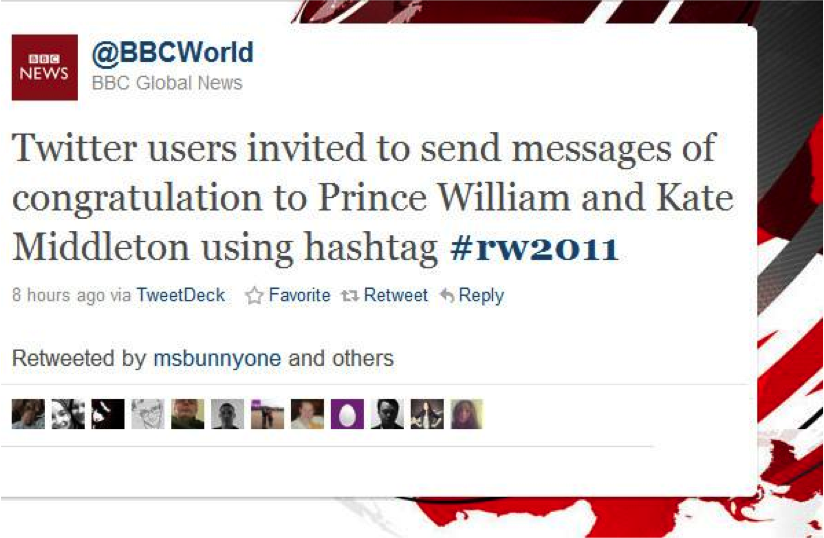
Your hashtags are only as strong as they are usable. An ambiguous or vague concept is unlikely to gain any traction simply because the community won’t know what to do with it. If you have a business, taking advantage of shows and events with a Hashtag is paramount. People, as a rule, prefer things that make sense and are easily understood. Make the purpose of the tag clear, so it’s not just you who uses your new Hashtag.
BBC invited users to engage with the royal wedding using #RW2011. The hashtag was unambiguous, the purpose was clear. The hashtag’s success was also aided by its association with a world event, for which there was already a lot of social media chatter. You can read more here about how brands can use social media to capitalize on world events.
4. Think Through ALL the Implications and Associations
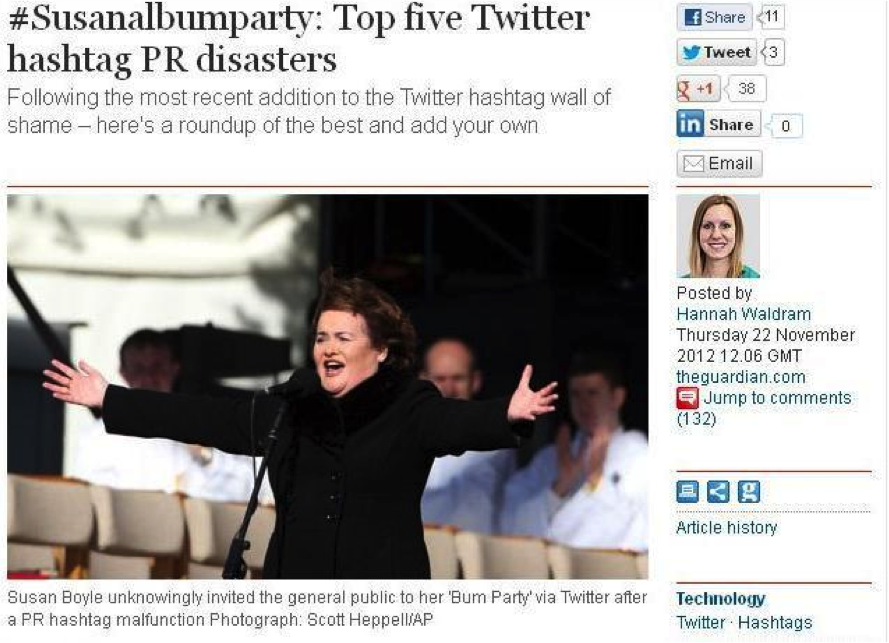
Cautionary tales abound from poorly designed hashtag campaigns. Popular Scottish singer Susan Boyle’s now infamous “Susan Album Party” hashtag, #susanalbumparty got more attention for the unintended, lewd interpretations of the tag than the album itself. Beware of the hidden words that appear when spaces are removed from hashtagged phrases. If you don’t have a brand image to protect, maybe infamous isn’t a problem. But don’t invite your twitter network to a “bum party” unintentionally.
If you’ve decided to recycle an existing hashtag, you can be strategic about making the pre-existing associations work in your favor. Use tools like Hashtagify.me to check out existing associations with your hashtag, including a graph of influential or power users of the hashtag.
5. Less is More
Once you start to see results, it can be tempting to overdo it with hashtags. Be warned though, while social media is notorious for moving on quickly, this is only true to a point. No one should hold a new hashtag campaign every week. It’s fine to use them with every post, but give people a chance to take one idea at a time.
Similarly, keeping your hashtags minimalist will make them more useable in Twitter’s limited format, and more memorable. Citibank has a great example of minimalist messaging with their #Motivational Monday tweet: “Two Words”: Healthy Breakfast.
Design your hashtags to stick and they will become an important addition to your arsenal of powerful and effective marketing tools. Got a tip of your own? Share your do’s and don’ts of good hashtag design with us below.
Also, if you have any hashtag campaigns you want to launch and need help boosting audience engagement, feel free to reach out and we’d love to strategize with you!
Frequently asked questions about hashtags
- How long can hashtags be?
- For Twitter hashtags, the limit is the length of a tweet, which is 280 characters (including the hash symbol). For Instagram hashtags, the limit is up to the maximum length of a comment which is 2,200 characters. In addition, you can add no more than 30 hashtags to a single post.
- What characters can be in a hashtag?
- Hashtags can only contain letters, numbers, emojis, and underscores. No special characters or spaces are allowed. Twitter also allows brands to add their own custom branded emojis to hashtags.
- How do you register a hashtag? / Can you legally own a hashtag?
- The only method of registering a hashtag is to trademark it, which is done through the USPTO. However, keep in mind that a trademark is different than a copyright and only allows you to restrict the use of hashtags if you can prove that it is being used to directly compete with your own product. See the USPTO Trademark Manual for more on how hashtags are evaluated.

Guest Post by Owen Andrew.
Owen Andrew is a freelance journalist living in Southern California. Owen covers a number of topics including Social Media, E-commerce, tech and business both in web and print format. He is a big fan of EDM, video games and comics. Above all though, he enjoys time with his wife and children.
Edited by Ryo Chiba, Cofounder at Topic




